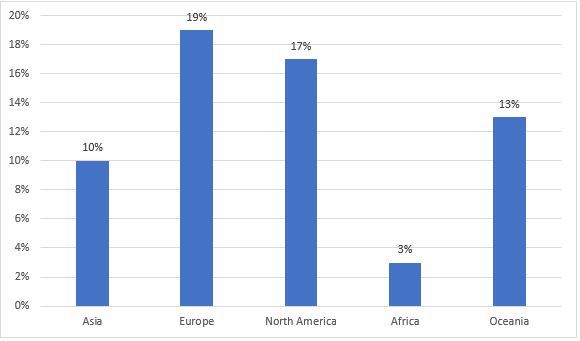Author: Himanshu Patni
07 September 2021
Key Highlights of the Report:
According to a new report by Univdatos Market Insights, Global Wearable Artificial Organs Market is expected to reach USD 27.3 Bn in 2030 by growing at a CAGR of 16.9%. Wearable artificial organs are medical devices used in organ dysfunction management. They carry out organ function while offering patients the facility of mobility and independence inside or outside their homes, or even in a hospital setting. Among the most important advantages wearable artificial organs offers to patients is improving mobility and, in general, flexibility in health management. Wearable prostheses allow care during daily activities; hence, they enable a higher level of activity with less frequent hospital visits or duly admitted conditions in medical facilities. In addition, very often, the treatment using such a device is more point-to-point and personalized, which further gives better results in terms of the recovery of the patient and his or her quality of life. Furthermore, wearable artificial organs could save costs to the health system by replacing long and thus potentially costly hospitalization or invasive procedures.
Unlock Insights into the Wearable Artificial Organs Market – https://univdatos.com/get-a-free-sample-form-php/?product_id=5696
The report opines that one of the major factors that will motivate the market in the next few years is an increase in the geriatric population of this country. Increasing elderly population has led to a rise in predisposition to age-related diseases that normally include heart disorders, failure of renal organs, respiratory problems, and many others. Under such conditions, wearable artificial organs are a nascent solution enabling continuous monitoring and management, thus helping elderly patients improve their quality of life while reducing the burden on healthcare systems. These devices will be able to assure ease for elderly patients to live alone or remain active by providing support in monitoring vital signs, remembering medicine, and availing emergency aid if needed. Hence, with increasing innovations to address special needs and challenges in older patients, the market for wearable artificial organs is expected to boom. This is for the reason that the demand for products designed for improving the health needs of aging populations is on the rise.
Fig1: World ageing population and in regions in 2023

Apart from this, growing technological advancements including 3D Bioprinting, Nanotechnology, Bioengineering, and Gene Editing, amongst others in Wearable Artificial Organ also complement the growth of the market. Recent developments in regenerative medicine have opened up new avenues for organ repair and regeneration with new hope for patients suffering from chronic organ failure. Some of the recent strategic collaborations are:
Artificial Kidney Sector Gaining Maximum Traction in Market
The segment throwing the wearable artificial kidneys has been very demanding in global wearable artificial organ marketplace. The recent advanced technologies in the medical treatment field is enabling evolution and growth of the innovative wearable artificial kidneys in the surgical treatment given to kidney patients. These innovative devices have made a person independent and mobile to undergo continuous renal replacement therapy while maintaining an active lifestyle. This is a very important section, bearing in mind the increasing cases of kidney diseases globally and the increasing demand for more convenient modalities in their treatment. Additionally, the better outcomes and improved quality of life make this section very crucial in the overall wearable artificial organ market.
Conclusion
Wearable artificial organs are globally a transformation in the field of medical innovation. Improved with technology, wearable artificial organs offer new opportunities to exercise quality care and patient comfort far beyond the previous capabilities. Starting from wearable artificial kidneys to wearable pancreatic devices, these revolutionary new solutions have entirely changed the world of care for people with multiple organ injuries. Wearable prostheses contribute a large potential growth to the market and behind that, among other things, an increase in chronic disease, growing demand for less invasive treatment options, and continuous research and development. These efforts will result in a more active, more productive life for patients in handling their disease with support and treatment other than through conventional clinical setups. Some of the challenges that need to be worked through to really capture the potential of wearable artificial organs include regulatory, pricing, and technical areas. It involves tight collaboration between healthcare providers, industry stakeholders, regulators, and researchers in driving further industrial innovation. The future of the wearable global market holds great promise in shaping health, offering hope to millions of patients globally with these emerging advanced technologies that improve health outcomes and health-related quality of life.
Get a call back